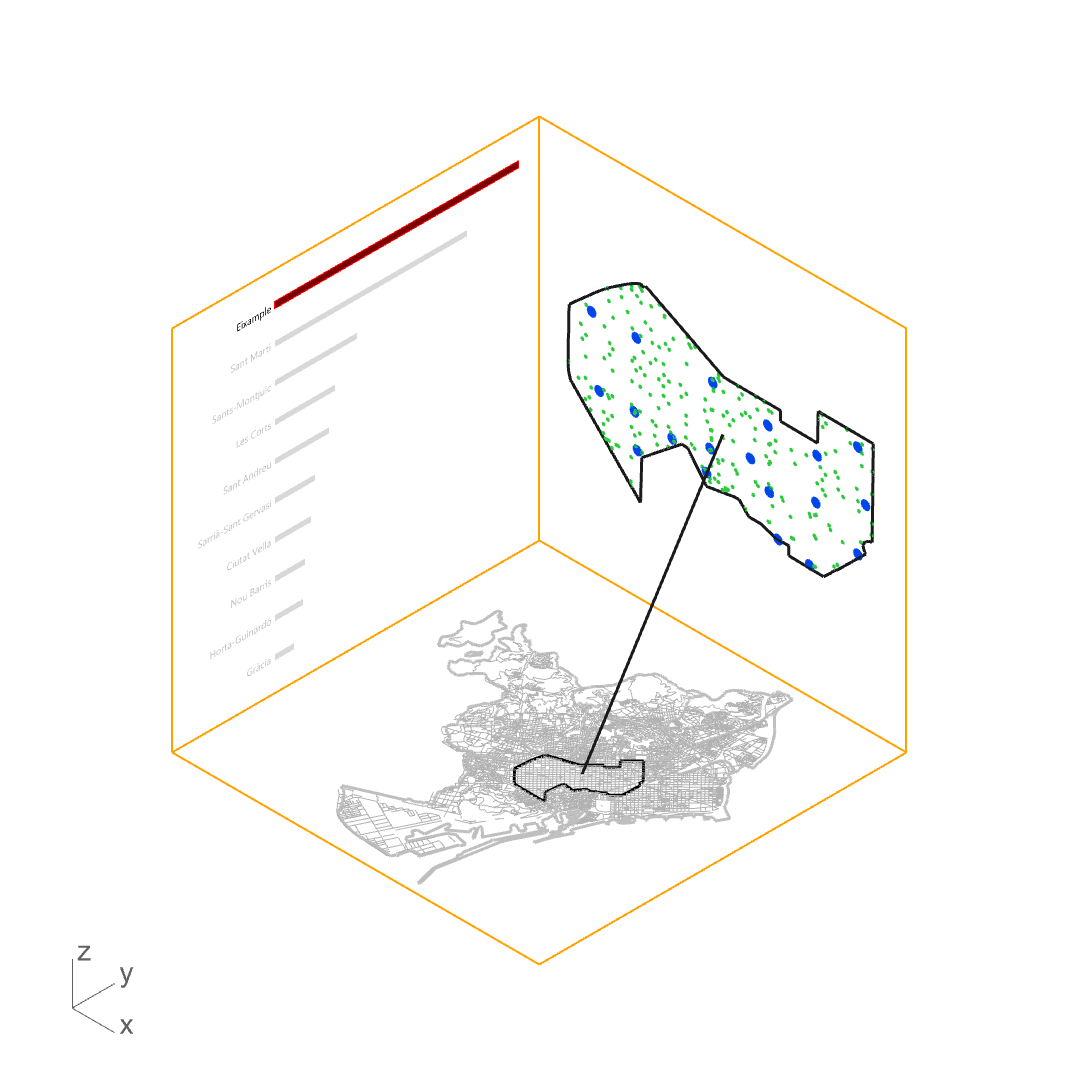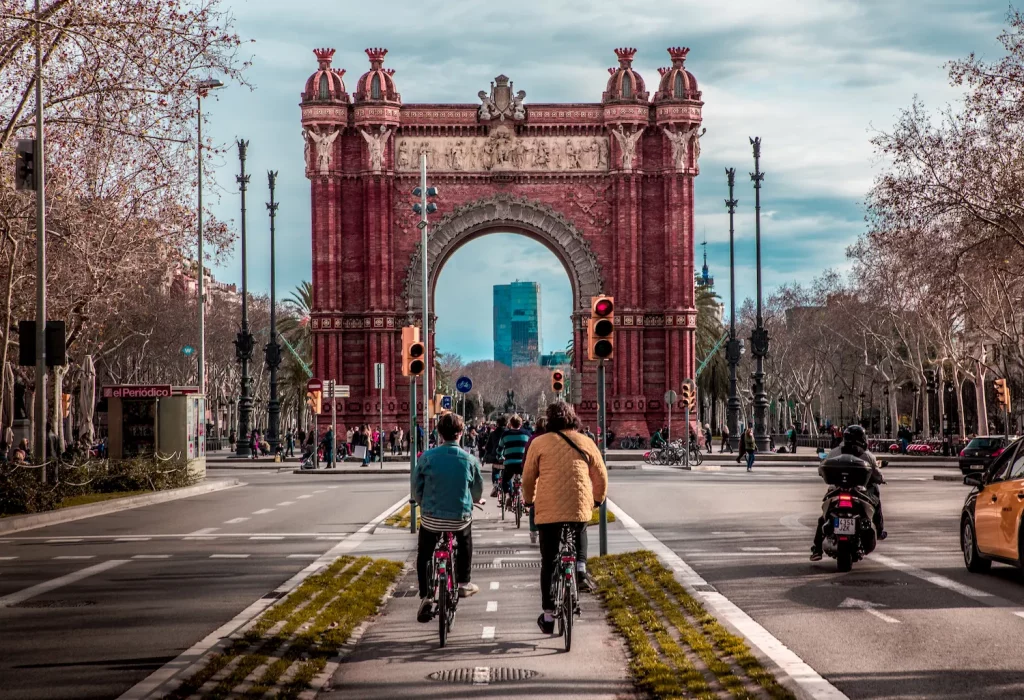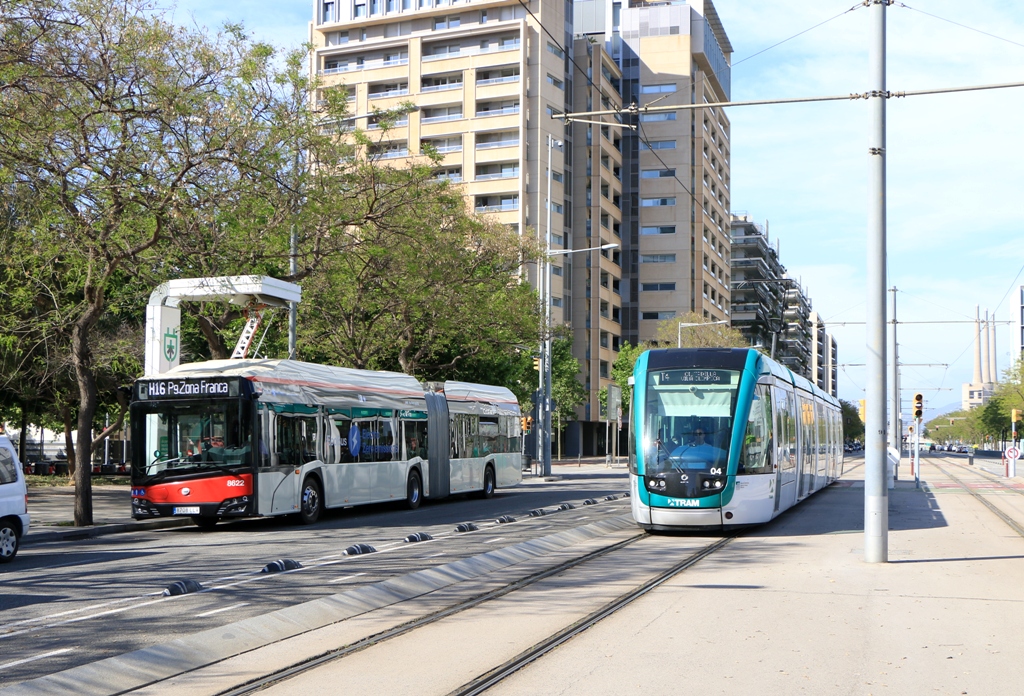Barcelona is home for more than 1.6 million inhabitants and is one of the most densely populated cities in Europe. It also owns the title of being the city of Europe with more cars per inhabitant. Given that around 30% of the people use private vehicle to move around the city, the air pollution is one of its main problems. Another issue that concerns the citizens is the noise caused by the congested traffic specially in centric districts like Eixample.
Knowing this, Barcelona faces some challenges with it’s future mobility. A transition to ensure sustainable and efficient transport is needed and that is the reason behind this analysis. Around 70% of the commutes happen within the municipality and that is why the connectivity of the Districts is crucial to develop a new transport ecosystem.

In this image we analyse the connectivity of each District of Barcelona by bike and public transport (metro & bus). This means of transportation are key for the city to become a more sustainable city.
Cycling

On the left face of the cube there is a diagram showing the districts ordered by the amount of cycling kilometres. Eixample and San Martí are, by far, the ones that have the most. It makes sense because those are the districts where the blocs of the “Pla Cerdà” are located this famous urban planning eases to constitute a network of horizontal and vertical cycling lanes.
The districts with the less space for bikes are Ciutat Vella, Gracia and the ones located close to the mountain. Ciutat Vella and Gracia have a common issue because most of their streets are very narrow. That can be solved if pedestrians have priority and bikers can access easily. However, the districts close to Collserola (Nou Barris, Horta-Guinardo and Sarrià-Sant Gervasi) are very difficult to move around by bike. The slopes in some areas and the mix of narrow streets with big congested avenues makes it challenging to build continuous cycling lanes. In fact, a very controversial cycling lane has been inaugurated in the end of 2023 which is the one in Via Augusta (Sarrià-Sant Gervasi). This street is known to be the entrance and the exit for cars that come in and exit Barcelona every day through the Vallvidrera tunnels. The reduction of two car lanes is causing massive traffic jams and a lot of neighbours raised complains against the project. It is important to find solutions that don’t cause a counter effect in mobility and that is one of the most difficult challenges.
Public transport

On the right face of the cube there is an animation showing the amount of bus stops (green) and metro stations (blue) in each district. Most of the districts are very well connected in terms of public transport. Sarrià-St Gervasi doesn’t have any metro station but has multiple FGC stations that connect the district with Plaça Catalunya very efficiently. Although this district is the most disconnected with the rest in terms of railway, a new metro line is being finished that will cross horizontally all it’s neighbourhoods. When completed (around 2027) it will be the largest metro line in Europe enhancing the good transit system that Barcelona have developed over the last 100 years.
Electric buses are being added to the TMB fleet to make this transport more sustainable than ever before. By doing that, noise and pollution will be significantly reduced around the city. Barcelona needs to keep investing in infrastructure to help this change to electrification happen faster.
Another project that will better the public transport connectivity is the Diagonal connection by tram. This transport is one of the most efficient, safe and doesn’t cause air pollution. A lot of cities already has it as the main public transport and it’s great news that Barcelona is investing in it.
Heading to a sustainable future
Connectivity is key to achieve a sustainable and livable cities. How do we move is one of the most important questions that major cities need to answer. The solution is not easy but investing in electrified public transport and making more space for bikes and pedestrians can have a huge impact on our quality of life. Barcelona is making some steps in the right direction but there is still a long way to go. Not only the Municipality but the Catalan and Spanish Government need the commitment to keep improving the way we move in Barcelona.
References
https://www.barcelona.cat/metropolis/ca/continguts/com-ens-movem
https://noticies.tmb.cat/transport/deu-dades-que-expliquen-com-ens-movem-cada-dia-regio-de-barcelona

